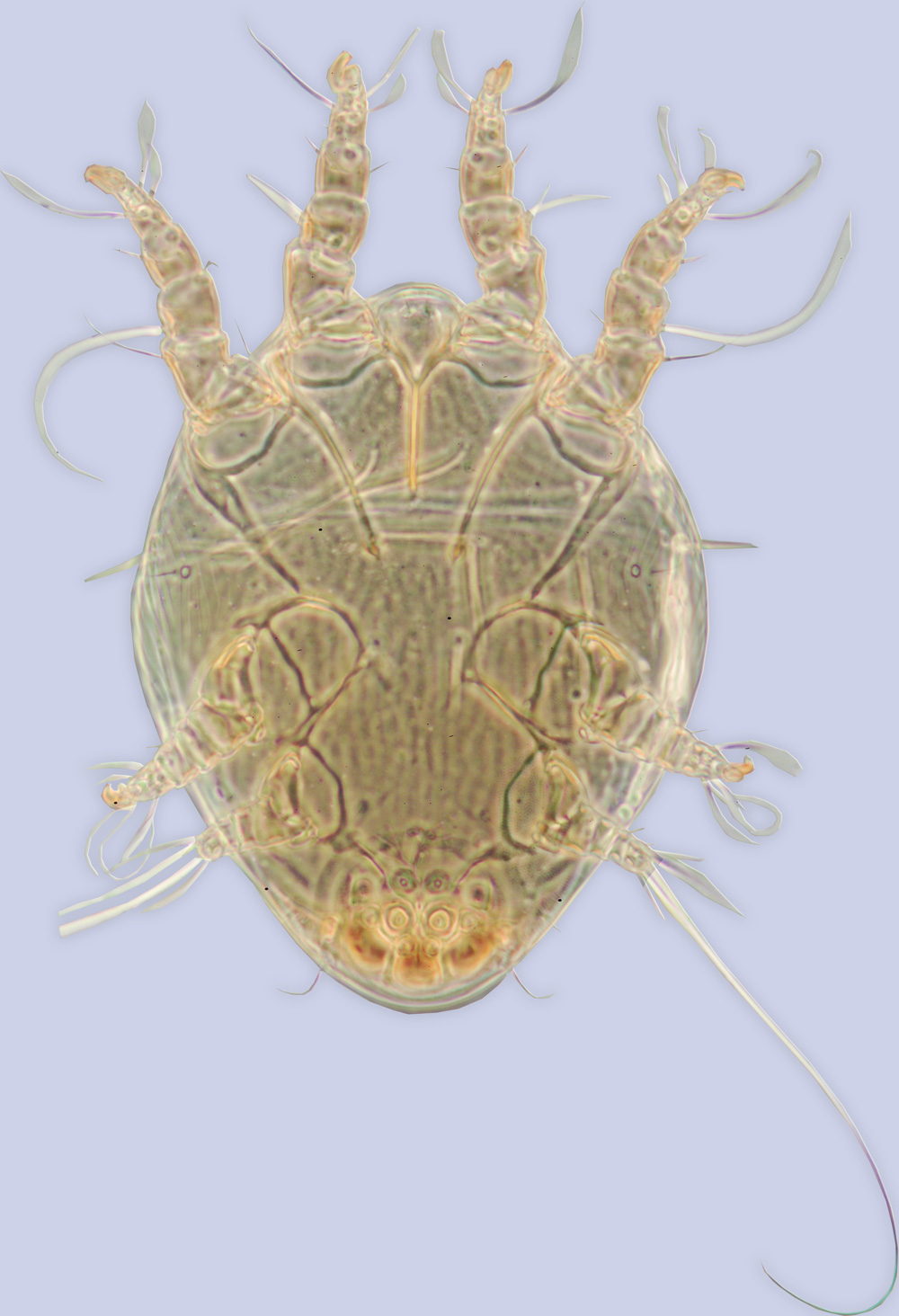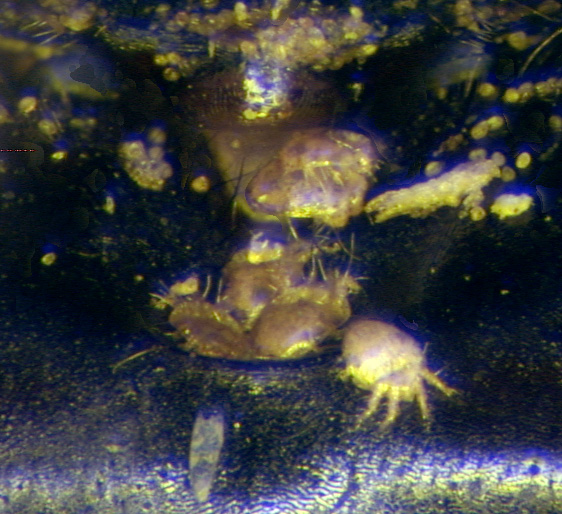Bee Mites : Acari : Acariformes : Sarcoptiformes : Chaetodactylidae : Roubikia
Roubikia latebrosa Klimov and OConnor 2007
Roubikia latebrosa Klimov et al., 2007: 118, Figs 1,5,6; Klimov et al., 2007a: 1371 (included in morphological phylogenetic analysis); Klimov & OConnor, 2008: 103 (included in key)
Material (show database records). Holotype. HDN - PERU: Loreto, Iquitos, ex Tetrapedia sp., (1st metasomal tergite), 13.ii.1989, D.W. Davis, USNM, BMOC 96-0510-213; deposited in USNM. Paratypes. 5 HDNs - same data as holotype; 7+4 HDNs - 20 km from Ucayali on Rio Calleria, Colonia Calleria, ex Tetrapedia sp., (metasomal acarinarium on 1st metasomal tergite + lateral mesosoma), 10-30.ix.1961, B. Malkin, FMNH, BMOC 03-1008-052. Paratypes in USNM, FMNH, UMMZ.
Description. Deutonymph. Gnathosomal setae present, well-developed. Dorsal extensions of apodemes I-II not completely surrounding setae scx. Setae si about twice as long as se or longer, usually as long or longer than distance from lateral edge of prodorsal shield to base of si + distance between si. Genual setae mG I slightly pectinate. Setae mG II nearly as long as leg II (with claw). Other characters as in Roubikia panamensis (Baker, Roubik & Delfinado-Baker 1987).
Diagnosis. This species can be distinguished from other species of Roubikia by the relatively long internal scapular setae si that are twice as long as se or longer (si less than twice as long as se in all other species of Roubikia known to us).
Variation. One supracoxal seta scx is enlarged (30), solenidion-like (length of the other scx is 7) (BMOC 96-0510-213#6).
Hosts. Tetrapedia sp.
Distribution (show map). Peru.
Etymology. Latebrosus (= here hidden) is a Latin adjective.
Note. Phoretic in the acarinarium situated on the 1st metasomal tergite.
References
Klimov, P. B. & B. M. OConnor. 2007. Ancestral area analysis of chaetodactylid mites (Acari: Chaetodactylidae), with description of new early derivative genus and six new species from the Neotropics. Annals of the Entomological Society of America.100: 810-829.
Klimov, P. B., B. M. OConnor & L. L. Knowles. 2007a. Museum specimens and phylogenies elucidate ecology' s role in coevolutionary associations between mites and their bee hosts. Evolution.61: 1368-1379.
Klimov, P. B. & B. M. OConnor. 2008. Morphology, evolution, and host associations of bee-associated mites of the family Chaetodactylidae (Acari: Astigmata), with a monographic revision of North American taxa. Miscellaneous Publications Museum of Zoology University of Michigan.199: 1-243.
Image Gallery
B. OConnor and P. Klimov ©
Created: Jun 14, 2011
Last modified: 



